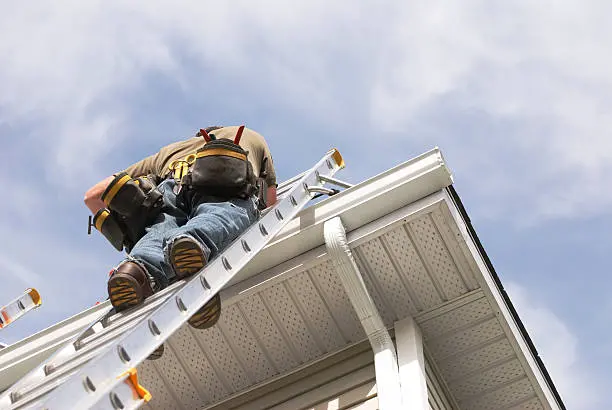Los Angeles homeowners are transforming their properties into personal retreats with stunning deck additions and rooftop extensions. These outdoor living upgrades offer tremendous value and lifestyle benefits. The desire for expanded entertaining spaces has grown significantly in recent years. Property owners recognize that well-designed outdoor areas can essentially add functional square footage to their homes.
When planning deck installations or rooftop extensions, coordinating with experienced roofing Los Angeles professionals becomes essential for project success. Many homeowners underestimate the complexity of integrating new structures with existing roof systems. Poor planning often leads to water damage, structural issues, and costly repairs down the road. Smart property owners understand that seamless integration between decking and roofing prevents long-term headaches and protects their investment.
The Growing Appeal of Outdoor Living Spaces in Los Angeles
Los Angeles residents are embracing outdoor living like never before, with deck installations and rooftop lounges becoming standard home improvements. The year-round climate makes these spaces practical investments rather than seasonal luxuries. Property values consistently increase when outdoor areas are thoughtfully designed and properly constructed. Modern homeowners view decks and rooftop extensions as essential components of their living space rather than optional additions.
Rooftop Entertainment Trends: The popularity of rooftop bars has inspired homeowners to create similar spaces at home. Professional installation ensures these elevated areas can safely support furniture, gatherings, and various weather conditions. Many properties now feature outdoor kitchens and seating areas on previously unused roof space. These installations require careful structural analysis to verify load-bearing capacity and proper drainage systems.
Critical Risks of Poor Coordination Between Roofing and Decking Projects
Inadequate planning between roofing and decking installations creates serious problems that can compromise entire building systems. Water intrusion represents the most significant threat when these projects are not properly coordinated. Structural damage often occurs when contractors fail to account for load distribution and attachment points. Many property owners discover these issues only after expensive damage has already occurred throughout their homes.
Waterproofing Vulnerabilities: Deck attachments to exterior walls and rooflines create potential water entry points that must be sealed with precision flashing systems. Improper installation allows moisture to penetrate behind siding and into structural components, causing rot and mold growth. The connection points between deck ledger boards and house structures require specialized waterproofing techniques. These vulnerable areas demand attention to detail that many general contractors simply cannot provide without roofing expertise.
Load Distribution Concerns: Adding deck weight to existing roof structures can exceed design limits if proper engineering analysis is not conducted beforehand. Rooftop decks and extensions must distribute weight evenly across multiple support points to prevent sagging or structural failure. The additional load from furniture, people, and weather events like snow or ponding water must be calculated accurately. Professional assessment determines whether existing roof framing requires reinforcement before deck installation can proceed safely.
Ensuring Seamless Integration Through Professional Coordination
Properties benefit significantly when single contractors handle both roofing and decking aspects of outdoor living projects from start to finish. This approach eliminates communication gaps that frequently cause problems when multiple contractors work independently on interconnected systems. Unified project management ensures that waterproofing details, structural requirements, and aesthetic elements work together harmoniously. Homeowners experience fewer delays, better cost control, and superior finished results through this coordinated approach.
The integration process requires several key considerations:
- Flashing installation around all deck-to-roof connection points prevents water infiltration and protects structural integrity.
- Drainage planning ensures water flows away from buildings and deck surfaces without creating ponding or overflow issues.
- Material compatibility between roofing and decking components prevents expansion and contraction problems that cause leaks over time.
- Structural analysis verifies that existing roof systems can support additional loads without compromising safety or building codes.
- Permit coordination streamlines approval processes when single contractors handle all required documentation and inspections.
Design Harmony: Coordinated projects achieve visual continuity between roofing materials and deck finishes that enhances overall property appearance. Color coordination and material selection create cohesive outdoor spaces that feel integrated rather than added as afterthoughts. Professional designers understand how different materials weather and age, ensuring long-term aesthetic compatibility. This attention to detail significantly impacts property value and homeowner satisfaction with completed projects.
Long-term Performance: Properly coordinated installations perform reliably for decades with minimal maintenance requirements when quality materials and techniques are used. Connection details between roofing and decking systems remain watertight through seasonal changes and weather exposure. Professional warranties typically cover both components, providing comprehensive protection for homeowners. This integrated approach reduces the likelihood of future repairs and complications.
Understanding Building Codes and Permit Requirements
Los Angeles building codes establish specific requirements for deck attachments to roofing systems that must be followed precisely to ensure safety and legal compliance. These regulations address structural connections, waterproofing standards, and safety features like railings and stairs. Professional contractors understand current code requirements and handle permit applications efficiently. Homeowners who attempt to bypass permit processes often face expensive corrections when violations are discovered during inspections or property sales.
Structural Connection Standards: Building codes specify how deck ledger boards must attach to house structures and what fasteners are required for different wall types. These connections must transfer loads safely without compromising existing roof or wall systems. Proper spacing, fastener types, and flashing details are defined in current codes. Professional installation ensures these connections meet all safety requirements and pass mandatory inspections.
Maintenance Considerations for Integrated Systems
Regular maintenance becomes more complex when deck and roofing systems are interconnected, requiring homeowners to understand how these components work together. Inspection schedules should address both roofing materials and deck structures simultaneously to identify potential problems early. Water drainage patterns, flashing conditions, and structural connections need periodic evaluation. Preventive maintenance protects these investments and prevents minor issues from becoming major repair projects.
Professional maintenance programs often provide the most effective approach for complex integrated systems that require specialized knowledge. Many contractors offer annual inspection services that identify problems before they cause damage. These programs typically include cleaning, minor repairs, and documentation of system conditions over time. Homeowners benefit from expert oversight that extends the life of both investments.
Conclusion
Successful deck and rooftop extension projects require careful coordination between roofing and construction professionals to achieve lasting results. Property owners who invest in properly integrated systems enjoy enhanced outdoor living spaces without compromising their home’s structural integrity or weather protection. The complexity of these projects demands professional expertise that can address waterproofing, structural, and aesthetic requirements simultaneously. Consider consulting with contractors who specialize in both roofing and decking to ensure your outdoor living project delivers the performance and beauty you envision.



































